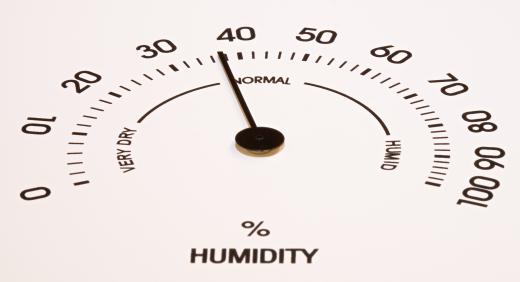An air washer is a piece of equipment that is designed to improve air quality by scrubbing the air that moves through it and adjusting humidity levels to keep the environment consistent. Air washers are used as part of climate control and air quality systems. Numerous companies manufacture equipment designed for different applications, including machines rated for buildings of varying sizes. It is important to select the right equipment, as an underpowered device will not be able to keep up with air flow and equipment not designed for applications with high levels of particulates may fail due to overloading.
The air washer works by continuously moving a supply of air over chilled water and pushing the air out to cycle it through a room or building. Humidity is pulled out of the air as it reaches the dew point by passing over the cold water. In addition, impurities in the air such as pollen and dust precipitate out. The air exiting the machine is drier and cooler. It also contains fewer particulates, making it safer and more comfortable to breathe.

In climates where the air is extremely dry, an air washer can work to increase humidity. Dry air can be hard for people to breathe. It can also contribute to the development of dry skin and may damage objects kept in the environment. The air washer removes particulates from the air and adds an injection of humidity to keep the climate at a steady humidity level for increased comfort. Environments like museums and archives need precise climate control to protect their collections and an air washer can help with this.

Simply using a fan to draw air over a container of cool water can scrub the air and make an environment more pleasant. Air washers draw upon this basic concept. The design can include extra features like filters to trap harmful particulates in order to increase the purity of the air.
Like other devices that clean air, an air washer can eat up a lot energy. Some are designed to be more efficient and may have features that are intended to reduce energy usage. Constructing buildings with efficiency in mind can include reducing the load on air washers by providing prefiltering and designing the building to hold a steady temperature and humidity level on its own. It is also possible to put these devices on timers and adjust their performance specifications to cut down on energy use.
Ever since she began contributing to the site several years ago, Mary has embraced the exciting challenge of being a About Mechanics researcher and writer. Mary has a liberal arts degree from Goddard College and spends her free time reading, cooking, and exploring the great outdoors.

